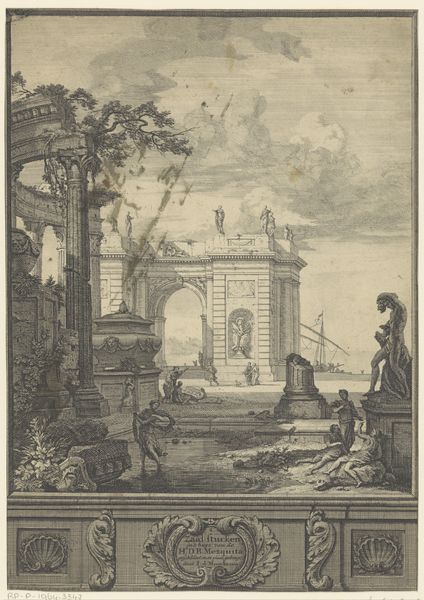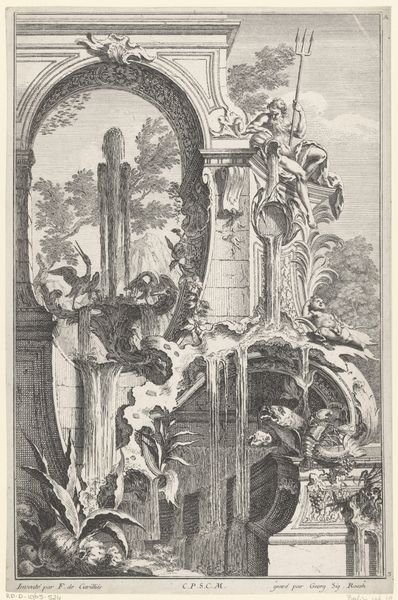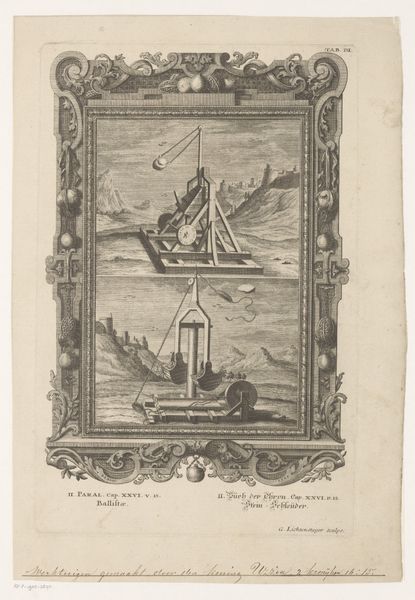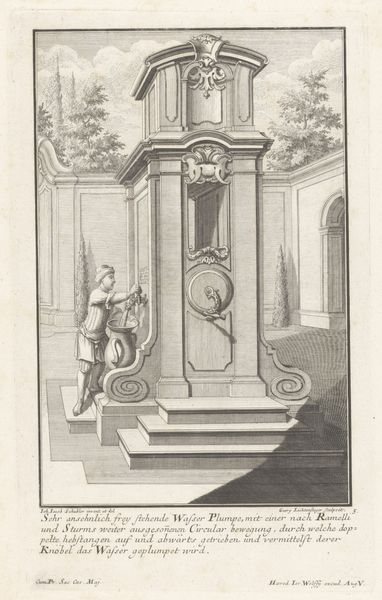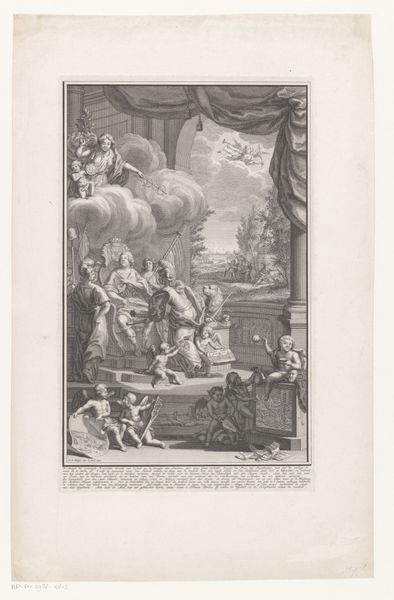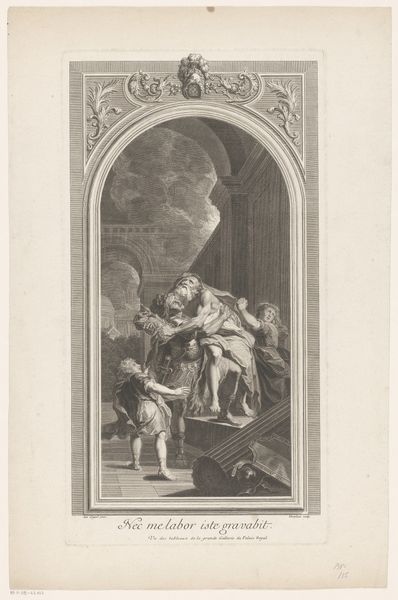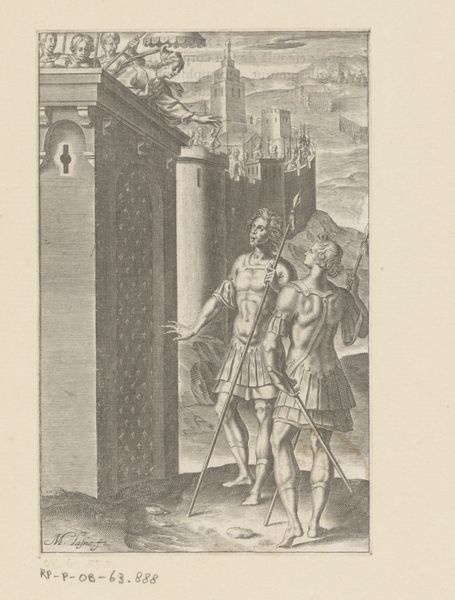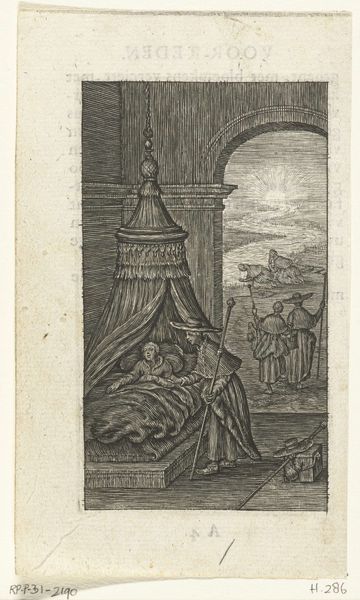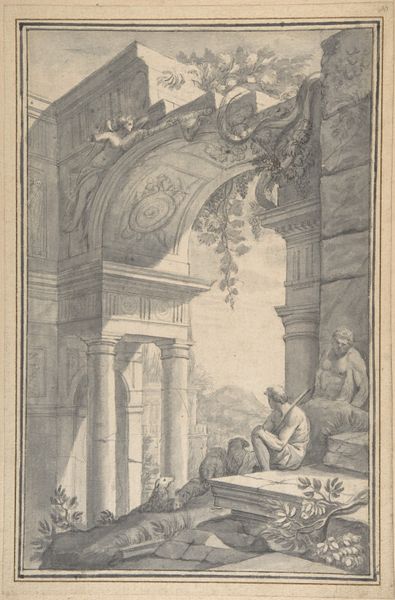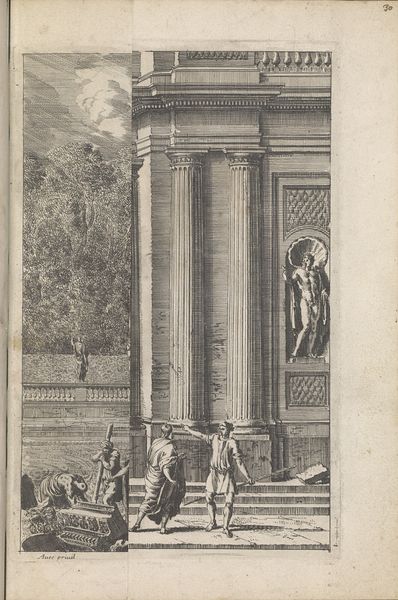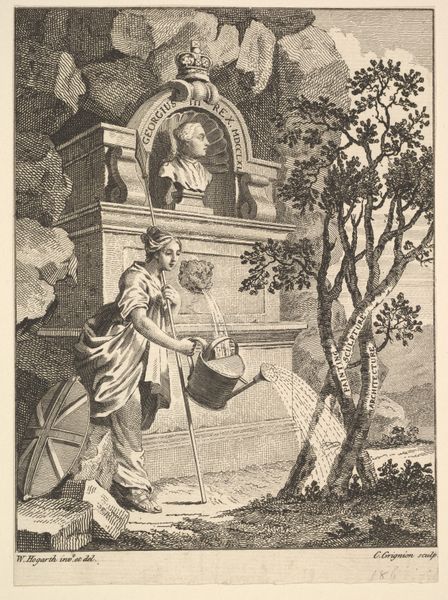
print, engraving
#
baroque
# print
#
old engraving style
#
landscape
#
figuration
#
history-painting
#
engraving
Dimensions: height 154 mm, width 96 mm
Copyright: Rijks Museum: Open Domain
Curator: As I look at it, what jumps out at me is the drama... the sea heaving with a ship disappearing in the distance, these two figures poised on a kind of stage. Editor: Well, drama is certainly baked into this print. The Rijksmuseum holds this piece titled "Theagenes en Chariclea na het vertrek van Calasiris," crafted in 1623 by Michel Lasne. It's an engraving, depicting a scene that seems heavy with emotion. Curator: Heavy is the word. She looks abandoned, right? Like, “Oh, he’s gone again," while he is clearly frozen with distress. Even the architectural setting seems to imprison them both! It’s not just sorrow; it’s like being trapped in a tragedy. Editor: The architecture is fascinating; see how it creates two distinct spaces for the figures? This division speaks volumes. In iconographic terms, thresholds often represent a transition or a point of no return. She is in a protected but confining room and seems aware of being bound in that space, while he looks towards the openness, the unknown represented by the tumultuous sea. The receding ship is his only hope for freedom and an open door from what confines him. Curator: You're right, and it's cleverly done because while the sea looks inviting it actually represents insecurity, maybe even death? It mirrors his internal chaos. I can almost smell the salty air. This work is filled with all sorts of paradoxes. Editor: Indeed. Think about how Lasne uses the convention of the print itself. Engravings, being reproducible, have an inherent sense of propagation – a kind of visual echoing through time. But at the same time, look at this isolated and singular moment! There's a tension between the repeatable nature of the medium and the unique intensity of the scene. He has transformed a history painting into an iconographic, almost eternal image, with clear intention to remain in cultural memory as an archetypal dramatic scene. Curator: You know, examining it closely now, it feels more poignant, less stagey than I initially thought. There’s an aching sense of vulnerability to their bodies, even a tenderness in his self-embracing gesture that pierces the drama. A good piece reveals more with time. Editor: Yes. Symbols accumulate meaning, and that accumulation transforms over time. A single artwork becomes a visual language unto itself. It truly allows for enduring dialogue through the ages.
Comments
No comments
Be the first to comment and join the conversation on the ultimate creative platform.
